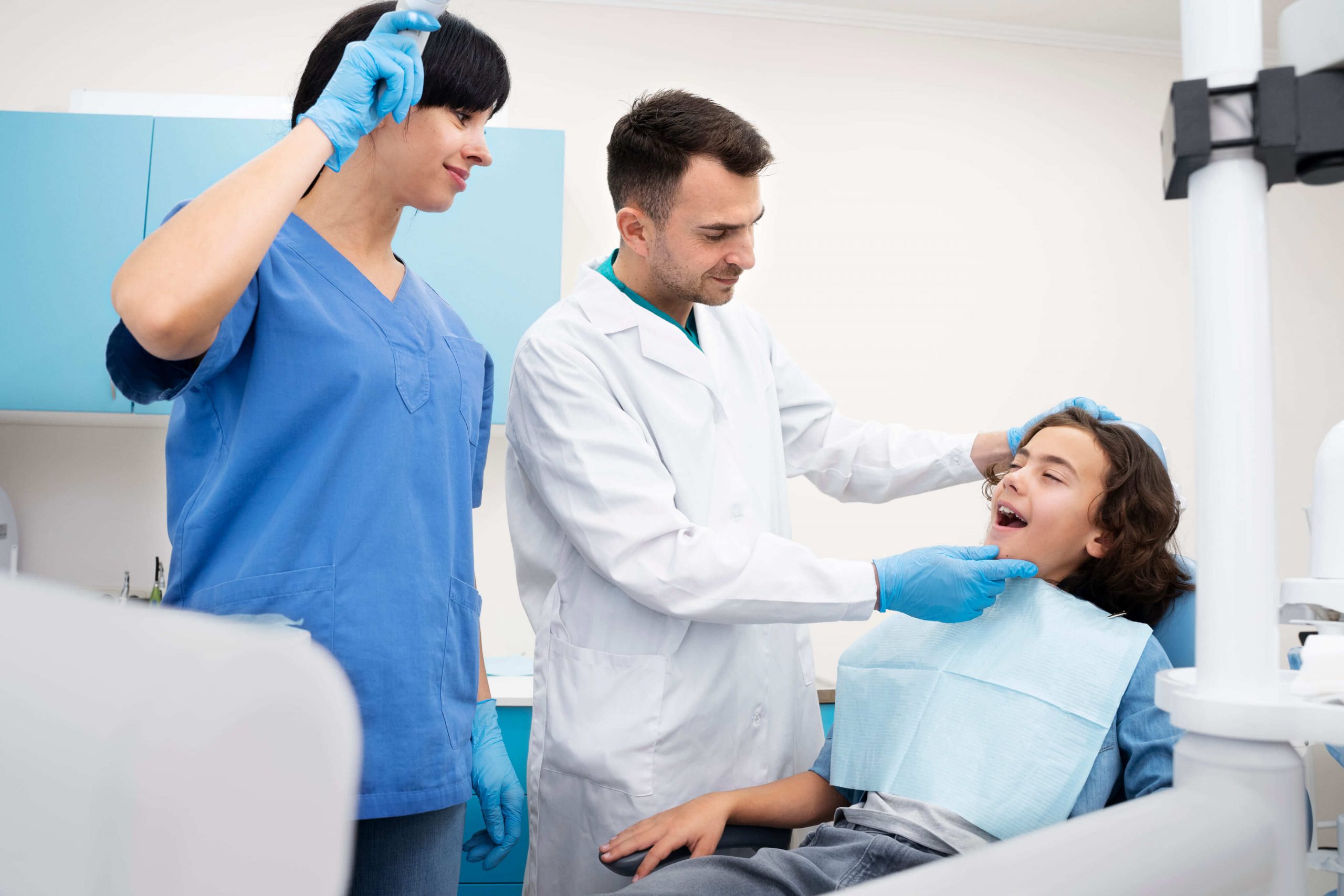
What is the MSE Expander Appliance?
The MSE expander is a surgical device formally called a “maxillary skeletal expander.” The MSE device is gaining popularity among orthodontists and other airway focused dental professionals. The MSE is effective at expanding the palate, but it does have some draw backs. MSE is just the start of other necessary subsequent treatments. Braces, other expanders and sometimes additional surgery usually follow MSE. It is very important to know your treatment plan from start to finish. Most cases including MSE expanders take 3-5 years to complete and involve 2-4 phases of treatment and cost $30,000 to $50,000. Re-read that.
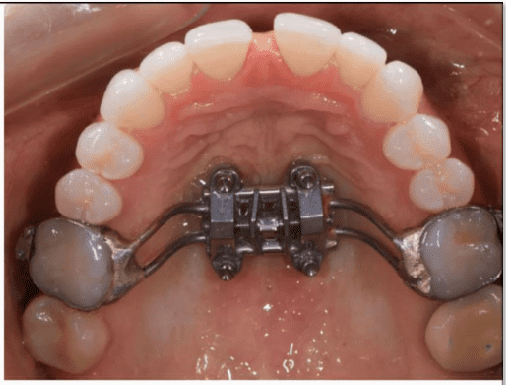
MSE Palate Expander
MSE Homeoblock and DNA Appliance in Palate Expansion Video
MSE is a Jaw Surgery Procedure
The first thing to know about maxillary skeletal expansion is that it is a surgical procedure that involves rapidly expanding the palate bone. Secondly, most undersized mouths need three dimensional growth, not just to get wider. The lower jaw is usually too small and sometimes sits back too far. And there can by some asymmetries and TMJ problems. Needless to say, growing an upper jaw is just the start and orthodontics and other expander appliances are always necessary after MSE expanders.
60% of adults have crowded teeth, narrow palates and very small tongue spaces. Adults who have small jaws and facial profile may suffer from TMJ pain, sleep apnea, bad posture and head and neck pain. All of these problems are linked and related which is why you are reading this page. The root cause of these problems is not having enough space in the mouth and nose. Not enough room for the teeth to fit and bite properly. Not enough space for proper breathing. Not enough room for the tongue to fit and function well.
Who Should get an MSE Expander Video
Alternatives to MSE Maxillary Skeletal Expanders
The DNA appliance and Homeoblock device are adult expanders that can grow adult jaw and facial structure without surgery. The DNA and Homeoblock usually do not involve braces, surgery or other appliances afterwards. The DNA and Homeoblock can grow the mouth and jaw structure three dimensionally and correct facial asymmetries. The entire treatment usually takes 12-24 months and costs between $8000 – $12,000. This treatment has some obvious advantages over MSE, but the appliances do not always get as much expansion as MSE. Some people get a some expansion and others get a lot. The nice thing about the DNA and Homeoblock is they both can do palatal expansion, forward growth and move the lower jaw forward. Basically they can grow everything 3 dimensionally and finish your case.
MSE Expander Results Vs Homeoblock and DNA Appliances
The most logical approach is do DNA or Homeoblock therapy and if they do not get enough growth, then a more aggressive treatment such as MSE can be used. The The treatment is technique sensitive and requires a skilled provider. The DNA and Homeoblock have received some criticism for causing gum recession and just tipping teeth. This only happens if the appliance is not worn long enough and it is expanded too quickly. We usually recommend expanding the appliances every 2-3 weeks for adults. And the appliance needs to be worn 10-12 hours per day (usually after dinner and through the night).
How Does MSE Expansion Work?
Both maxillary skeletal expansion (MSE) and surgically assisted rapid palatal expansion (SARPE) are surgical procedures used to increase the width of the upper jaw bones. Increasing the space in your mouth helps correct sleep apnea and airway resistance.
MSE and SARPE are very good at surgically expanding the width of the upper jaw. Most people undergo these procedures to get more space for the tongue to fit in the palate. And also to correct teeth crowding and cross bites. These treatments only grow the upper jaw wider. Most people who have small mouths need all their jaw bones to grow wider, more forward and taller. Not just the maxilla. The jaws and facial bones consist of many other bones that need to change size, shape and re-orient if treatment goals are to be accomplished.
Homeoblock and DNA Expanders
The Homeoblock and the Vivos DNA appliances are non-surgical facial growth devices. They look like retainers and are worn at night only. The appliances are custom designed per the patient to change the size and shape of the mouth and jaws. The DNA appliance uses light pressure, biting and tongue forces to grow the jaw bone. Depending on how the appliances are designed, they are capable of growing the jaws in all 3 dimensions. There is an upper and lower appliance to control the growth of the upper a lower jaws. The appliances are worn at night and the treatment usually lasts 12-18 months.
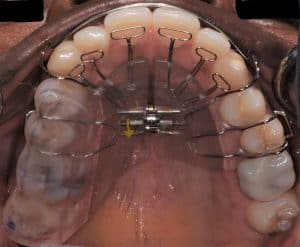
homeoblock appliance 3 300×247 1
What is MSE?
MSE stands for maxillary skeletal expansion. The MSE device is screwed into the palate bone with titanium screws. The expansion mechanism is radidly widened over time by the patient or a helper. It is surgically installed into the palatal bone after numbing the patient with local anesthesia. The same numbing process as used during filling procedures. The MSE is also called a “bone borne” expander. Or the action of the appliance is at the level of the bone. This is in contrast to braces that are connected to the teeth or are “teeth borne.”
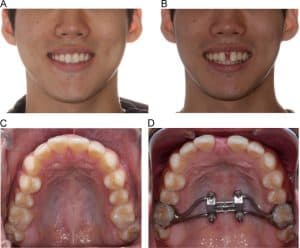
mse maxillary skeletal expander device 300×248 1
What is Surgically Assisted Rapid Palatal Expansion (SARPE)?
SARPE is basically a procedure where an oral surgeon cuts various facial bones to separate them. Once the bones are cut, the SARPE expander is placed and the jaws will expand very quickly. The SARPE Video above clearly shows how this works minus the unpleasant visual details of the bone cutting.
DNA or Homeoblock Appliance can be used with MSE
The orthodontic appliances are more comprehensive treatment appliances. The DNA and Homeoblock can grow jaw bone in all 3 dimensions whereas MSE and SARPE only increase the width of the palate. Cases only start with MSE and SARPE. Other treatment modalities such as braces and forward growth appliances will be necessary. Notice the large space that was opened between the front teeth in the after MSE treatment photo above. MSE only expands the palate, so a forward growth appliance such as the AGGA (Anterior Growth Guidance Appliance) will be necessary. The bite is very important. A problem with expanding the palate is now the upper jaw is wider than the lower jaw. Something will need to be done to correct the difference in size between the upper and lower jaws after MSE therapy. The best course of treatment is to use the non-surgical expander first and if the palate growth is inadequate, the case can be finished with MSE.
Adult Orthodontic Expansion Appliances Video
DNA compared to Homeoblock Appliance
As you can see, the DNA and Homeoblock look very similar. They are both capable of growing the mouth in all three dimensions. Using these devices is a matter of training and experience, but the appliances have comparable growth potential when in the hands of a knowledgable doctor. One major benefit of these appliances is they rarely need to be followed by other treatments such as braces or other growth appliances. Unless they are followed by MSE, in which case braces or Invisalign will be necessary.
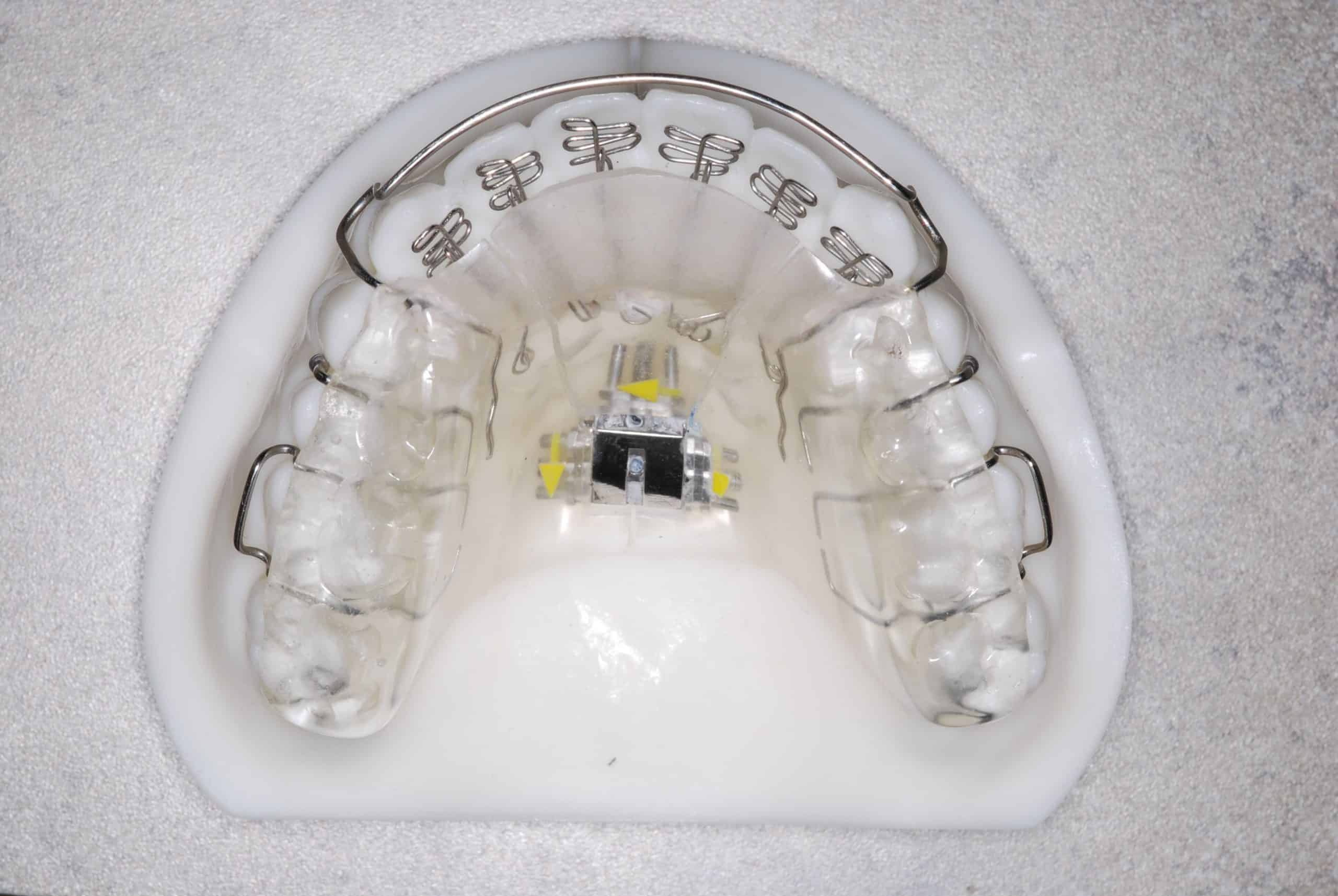
Vivos DNA Device
What is the Goal of Maxillary Palate Expansion?
To grow the maxilla wider of course? Unfortunately this goal does not solve the root cause of sleep apnea, TMJ pain and teeth clenching. Maxillary palatal expansion is only one piece of the puzzle. The root cause of these conditions is inadequate space in the jaws for the teeth to fit and bite. The mouth and nasal passageways need to grow to be three dimensionally larger and more voluminous. That creates more room for air to pass during breathing. And the teeth have more room to fit and bite better too.
The Goal is to Correct Sleep Apnea and TMJ Pain
DNA appliance therapy increases the size of the entire upper airway including the mouth and nose. And by creating space, the teeth can straighten and the bite can be better balanced. The result is less airway resistance, improved breathing patterns during sleep and less teeth clenching. And yes, you can retire the graveyard of dental appliances and CPAP. You will not need them anymore in most cases.
Why do People Clench Their Teeth at Night?
Because there is not enough room for the tongue to fit properly in the mouth and the airway collapses. Basically what happens is when someone goes from light sleep into deep sleep the tongue muscle relaxes and the tongue falls back into the throat. This happens because there is not enough room for the tongue to fit passively in the mouth. The tongue goes into the throat where there is more room. Teeth clenching will wake you up into a lighter sleep and your tongue will come out of your throat, so you can breath better. Teeth clenching is really a way for the body to defend your ability to breathe while you sleep. The tongue is literally choking you.
Daytime teeth clenching is caused by an uncomfortable bite. More space so the teeth can fit better, will correct a bad bite.
Palatal Expansion Increases Nose Breathing
All of these problems have the same root cause. The strategy is to grow the jaw spaces 3 dimensionally forward, wider and taller. That creates more space for improved breathing and airflow. It improves nasal breathing volume by creating a larger nasal base. Did you know the palate is the base of the nose? Yes. A wider palate means larger nasal base and better nasal breathing. Palatal expansion is a great treatment for chronic allergic rhinitis and sinusitis.

 (301) 421 1996
(301) 421 1996 burtonsvillesmiles@gmail.com
burtonsvillesmiles@gmail.com